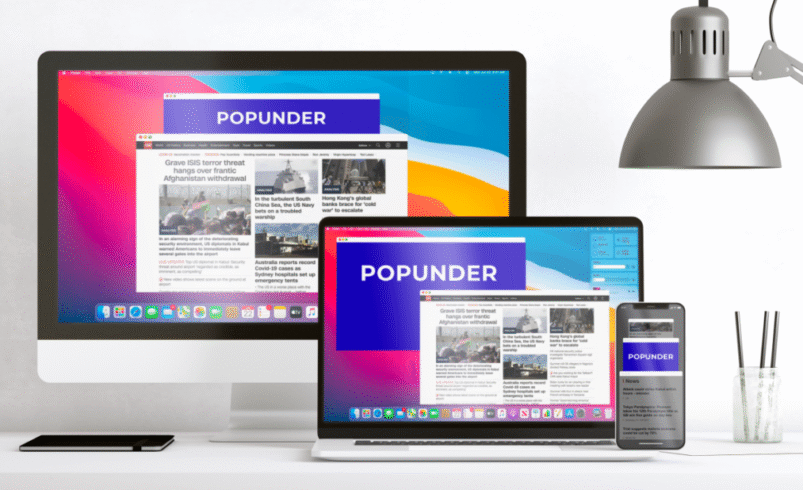Why Popunder Ads Still Convert When Other Formats Fall Flat

Most advertisers have written off popunders as relics from the early internet days. They remember the aggressive pop-up wars of the 2000s and assume anything remotely similar belongs in a digital museum. But here’s what’s actually happening: while marketers chase after the latest shiny formats and dump money into oversaturated channels, popunder ads are quietly delivering conversions at a fraction of the cost.
The gap between perception and reality has never been wider. Popunders aren’t those annoying interruptions people remember. They’ve changed. The technology improved, the targeting got smarter, and the user experience evolved. Yet most marketing conversations still pretend they don’t exist—which is exactly why they work so well for those who actually use them.
What Changed About Popunders (And Why It Matters)
The popunder format learned from its past mistakes. Modern implementations don’t blast users with intrusive windows that hijack their browsing. Instead, they load in the background and appear only when someone closes or minimizes their current window. That’s a massive difference from the old pop-ups that literally blocked content.
This timing shift changes everything. When someone closes a tab or window, they’re already in transition mode. They’re either done with what they were doing or looking for something else. A popunder appearing at that moment doesn’t interrupt anything—it just presents an option during a natural break in browsing behavior.
The technical improvements matter too. Modern popunders respect browser settings, work with ad blockers more gracefully, and don’t trigger the aggressive blocking that plagued earlier versions. They’ve essentially cleaned up their act while other formats became more intrusive.
The Cost Advantage Nobody Wants to Admit
Here’s where things get interesting. While CPM rates for banner ads and native placements keep climbing, popunder costs remain surprisingly affordable. The format’s reputation keeps demand lower than it should be, which creates opportunity for advertisers willing to look past the stigma.
A company running campaigns across multiple formats will typically see popunder traffic coming in at 40-60% less than comparable display inventory. That’s not a small difference—that’s the kind of gap that fundamentally changes campaign economics. When acquisition costs matter (and they always matter), format bias becomes expensive.
The math gets even better when factoring in click-through rates. Popunders don’t compete with dozens of other visual elements on a page. When they appear, they’re the only thing visible at that moment. This focused attention translates to engagement rates that surprise first-time users. Advertisers testing popunder traffic as part of their broader strategy often find it outperforms their banner campaigns despite costing significantly less.
When Popunders Actually Make Sense
Not every business should rush into popunder advertising. The format works best for specific situations. Performance marketers running direct response campaigns love popunders because the economics align with their KPIs. E-commerce stores promoting flash sales or limited-time offers see strong results because the format creates urgency without requiring perfect timing.
Lead generation campaigns tend to perform well with popunders too. When the goal is getting someone to fill out a form or download something, the format’s full-screen presence helps. There’s no sidebar competing for attention, no native ad that might blend in too well. Just the offer and a clear call to action.
The problem is when brands try to use popunders for awareness campaigns or subtle brand-building. That’s not what this format does well. Popunders excel at direct response—they’re built for action, not contemplation.
The User Experience Question
The elephant in the room is whether popunders annoy users. Fair question. The honest answer is: it depends entirely on execution.
Poorly implemented popunders that fire too frequently or redirect to irrelevant offers absolutely irritate people. But the same is true for any ad format. Nobody enjoys auto-play video ads, yet they’re everywhere. Native ads that mislead readers generate far more resentment than a straightforward popunder that clearly presents an offer.
Frequency capping makes all the difference. Showing the same user a popunder once per session or once per day maintains reasonable boundaries. Going beyond that crosses into spam territory. The best popunder campaigns treat inventory like a valuable resource rather than something to burn through.
Quality of the landing page matters more than the format itself. A popunder leading to a fast-loading, relevant page with a clear value proposition feels less intrusive than a banner ad that sends someone to a slow, confusing site. Context and execution trump format choice.
What the Data Actually Shows
Performance data from the past year tells an interesting story. While overall display advertising saw click-through rates continue their slow decline, popunder campaigns maintained stable engagement metrics. In some verticals—specifically finance, gaming, and software—popunder performance actually improved.
The conversion rates deserve attention too. Across multiple industries, popunders convert at rates comparable to or better than standard display formats. For certain offers, particularly those with strong hooks or time-sensitive deals, popunders outperform everything except search ads.
Return on ad spend tells the full picture. Because popunders cost less while converting at similar rates, the ROAS often exceeds other formats by significant margins. A campaign pulling 3x ROAS on banner ads might hit 5x or 6x when shifted to popunder inventory with the same creative approach.
The Targeting Capabilities People Overlook
Modern popunder platforms offer targeting options that rival premium display networks. Geographic targeting down to the city level, device and browser specifications, time-of-day scheduling, and behavioral targeting based on browsing history all exist within quality popunder networks.
This precision matters because it addresses the main historical criticism: that popunders were too broad and wasted impressions on irrelevant audiences. That criticism no longer holds. An advertiser can now target as precisely with popunders as with any other programmatic format.
Retargeting through popunders particularly deserves more attention. Someone who visited a site but didn’t convert can be reached again through a popunder showing exactly the product they viewed. The format’s visibility advantage means they actually see the reminder instead of scrolling past another banner.
Why Other Formats Are Struggling
The context around popunder success matters. Other formats aren’t just performing worse in a vacuum—they’re facing real challenges that popunders largely avoid.
Banner blindness has become so severe that users literally don’t see display ads anymore. Eye-tracking studies consistently show people’s gaze skipping right over traditional banner placements. Native ads face the opposite problem: they blend in so well that even when people see them, they don’t register as actionable content.
Ad blockers decimated many traditional formats but were less aggressive toward popunders, particularly newer implementations that follow industry standards. The result is higher delivery rates and less wasted spend on blocked impressions.
Social media advertising, once the darling of performance marketers, now suffers from extreme saturation. Cost per thousand impressions on major platforms has more than doubled in some categories over the past three years. That pricing pressure has marketers looking for alternatives that still deliver results.
Making Popunders Work
Success with popunder advertising isn’t automatic. Creative matters enormously. The landing page needs to load fast and present value immediately. The offer should be clear within three seconds because that’s about how long attention spans last when someone wasn’t actively seeking out the content.
Testing different timing parameters helps dial in performance. Some audiences respond better to immediate popunders while others prefer a delay. Some campaigns work better when the popunder fires on exit intent versus on site entry. The only way to know is testing.
Budget allocation deserves thought. Starting with 15-20% of display budget allocated to popunders gives enough volume to gather meaningful data without overcommitting. If performance justifies it, that percentage can grow. If it doesn’t, the learning cost stays manageable.
The reality is that popunder advertising works—not for everything, not for everyone, but for enough use cases that writing off the format means leaving money on the table. While competitors chase trending formats and overpay for saturated inventory, the advertisers willing to test popunders often find a cost-effective channel that actually drives results. In marketing, being right when everyone else is wrong tends to be profitable.



